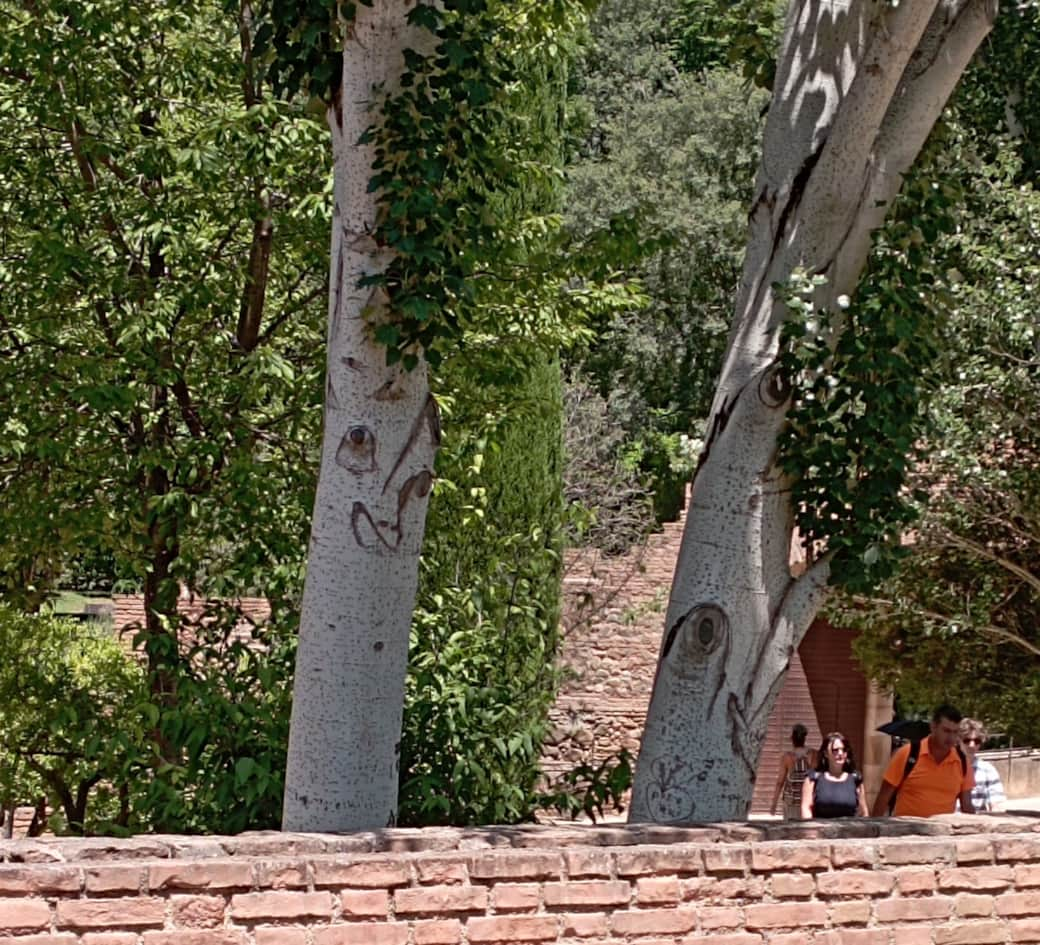Potted History of the The Alhambra
It was a palatine city, a Christian Royal House, the General Captaincy of the Kingdom of Granada, a military fortress and a medina all of life was housed to support the Palaces and administration.
It was declared a Monument in 1870.
9th - 12th CENTURY
The Arabs respected the Roman cities and roads by expanding them and adding new foundations. In the 9th century there are reports of constructions on the Sabika hill, where the Alhambra will later be built. It is believed that in Roman times and even before there must have been some construction at the site.
At its edge there was an important population centre, fundamentally Jewish, around which the development of the city of Granada took place. The prime minister, Samuel ibn Nagrella, reconstructs the abandoned buildings on the Sabika hill and installs his Palace on it.
In the 12th century, the successive waves of Almoravids and Almohads caused various fights in Granada that took place in the Alcazaba del Albaicín and the buildings that existed on the Sabika hill, sometimes serving as a refuge for local Andalusian partisans and others to the North African invaders.
Al-Ahmar, founder of the Nasrid dynasty, settled in the Old Fortress of the Albaicín in 1238, his attention was drawn to the ruins on the Alhambra hill. Thus, he decides to begin its reconstruction and install the court headquarters there, beginning the construction of the Alhambra that we know today.
The Alhambra was a palace, citadel and fortress, residence of the Nasrid sultans and high officials, court servants and elite soldiers; It reached its splendor in the second half of the 14th century , coinciding with the sultanates of Yusuf I (1333-1354) and the second reign of Muhammad V (1362-1391).
Granada, capital of the Nasrid kingdom, is gradually receiving Muslim populations due to the advance of the Christian conquest. The city is growing, changing, creating new neighbourhoods and extending the fences and walls practically until its conquest at the end of the XV century
16th-18th CENTURY
After 1492, the Alhambra was established as a Royal House with exempt jurisdiction in charge of the Tendilla. The Catholic Monarchs ordered extensive repairs, largely using Moorish artisans.
The Emperor Carlos V decides, in 1526, the construction of the palace that bears his name, together with other very significant constructions of Roman Renaissance style. The house of Austria continued from Felipe II (1556-1598) and his successors in charge of the conservation of the Alhambra, admired by humanists and artists such as Andrea Navaggiero (1524), ambassador of Venice at the Court of Carlos V.
In the first decades of the 18th century, Felipe V (1700-1746) dispossessed the Marquis of Mondéjar, heir to the Count of Tendilla, from the mayorship, beginning a period of abandonment practically until the reign of Carlos IV (1788-1808).
FROM THE 19TH CENTURY TO OUR DAYS
The Napoleonic occupation was a negative episode for the Alhambra, due to the explosion in 1812, when the French army withdrew. Only the courage of a Spanish soldier could prevent its almost total destruction.
To a stage of claims about the state of the monument, actively supported by Washington Irving (1783-1859), is added a growing interest in society for the gardens of the Alhambra and the orientalism that it evokes in the romantic imaginary, very well reflected in the plastic arts of the moment.
With the revolution of 1868, the Alhambra was separated from the Crown and passed into the domain of the State, declaring itself a "national monument" in 1870.
At the beginning of the 20th century, the care of the Alhambra was entrusted to a Commission (1905), replaced in 1913 by a Board of Trustees which, in 1915 became dependent on the General Directorate of Fine Arts. In 1944, a new Board of Trustees was created, which was maintained until the transfer to the Autonomous Community of Andalusia of the functions and services of the State in matters of culture.
As we walked from the carpark we just followed the crowd and walked to the entrance. Having pre purchased tickets online we just had to show the online receipt on my phone and the ID we used for the booking. Really efficient and organised.
As we walked through the turnstile we were in a shady walkway with gardens to our right. All manner of trees and underplanting. It is clear this area is maintained but is not too pristine and more natural than the formal gardens to come. This area was the nursery for the gardens and has now become a haven for wildlife.
There is the sound of running water, this is the Sultans water channel and brought water into the estate via a network of hydraulic system that allowed its collection from the Darro River and throughout the whole complex of Palaces and gardens.
So much remedial work has been carried out and the water is crystal clear and free running thanks to conservation works.
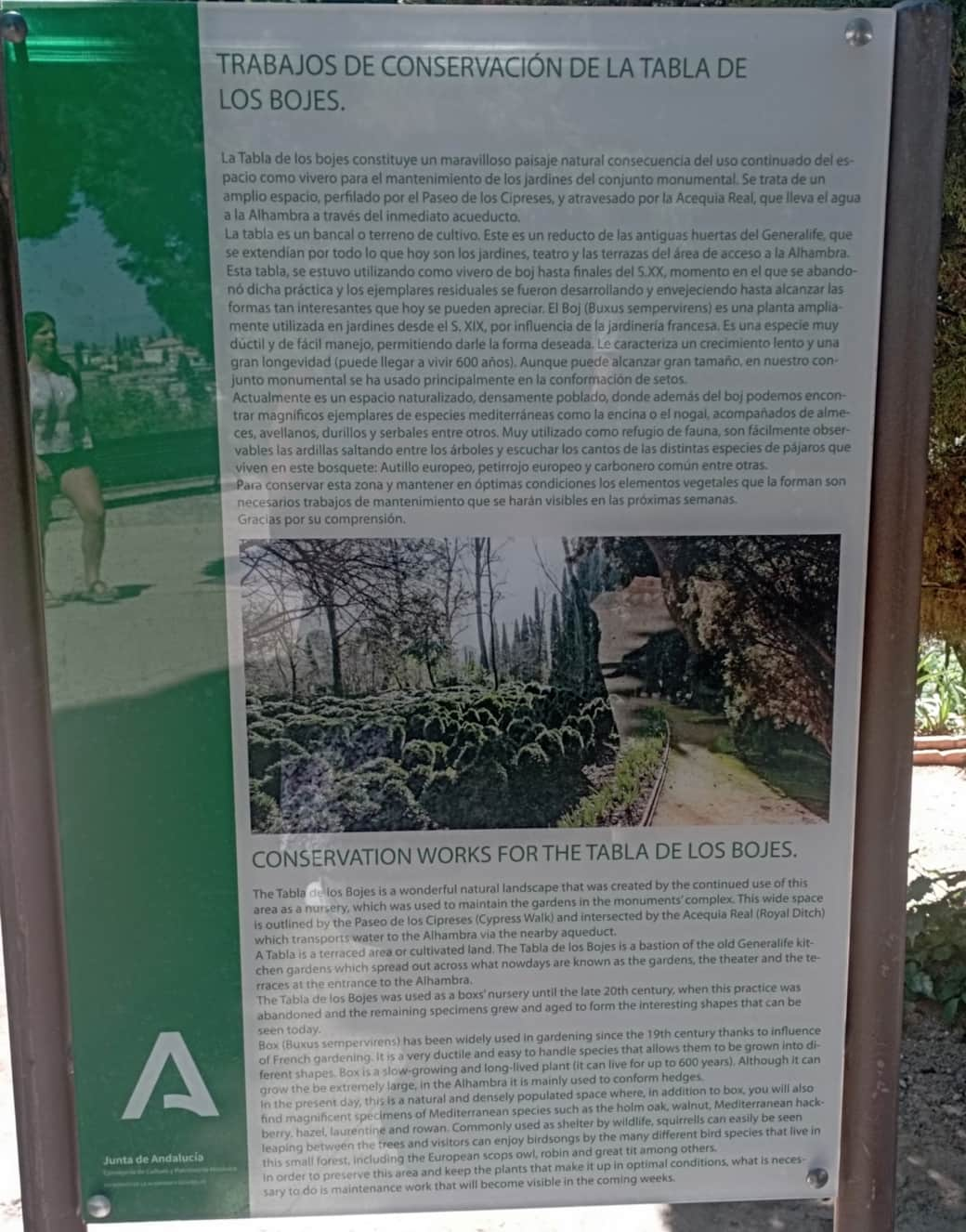
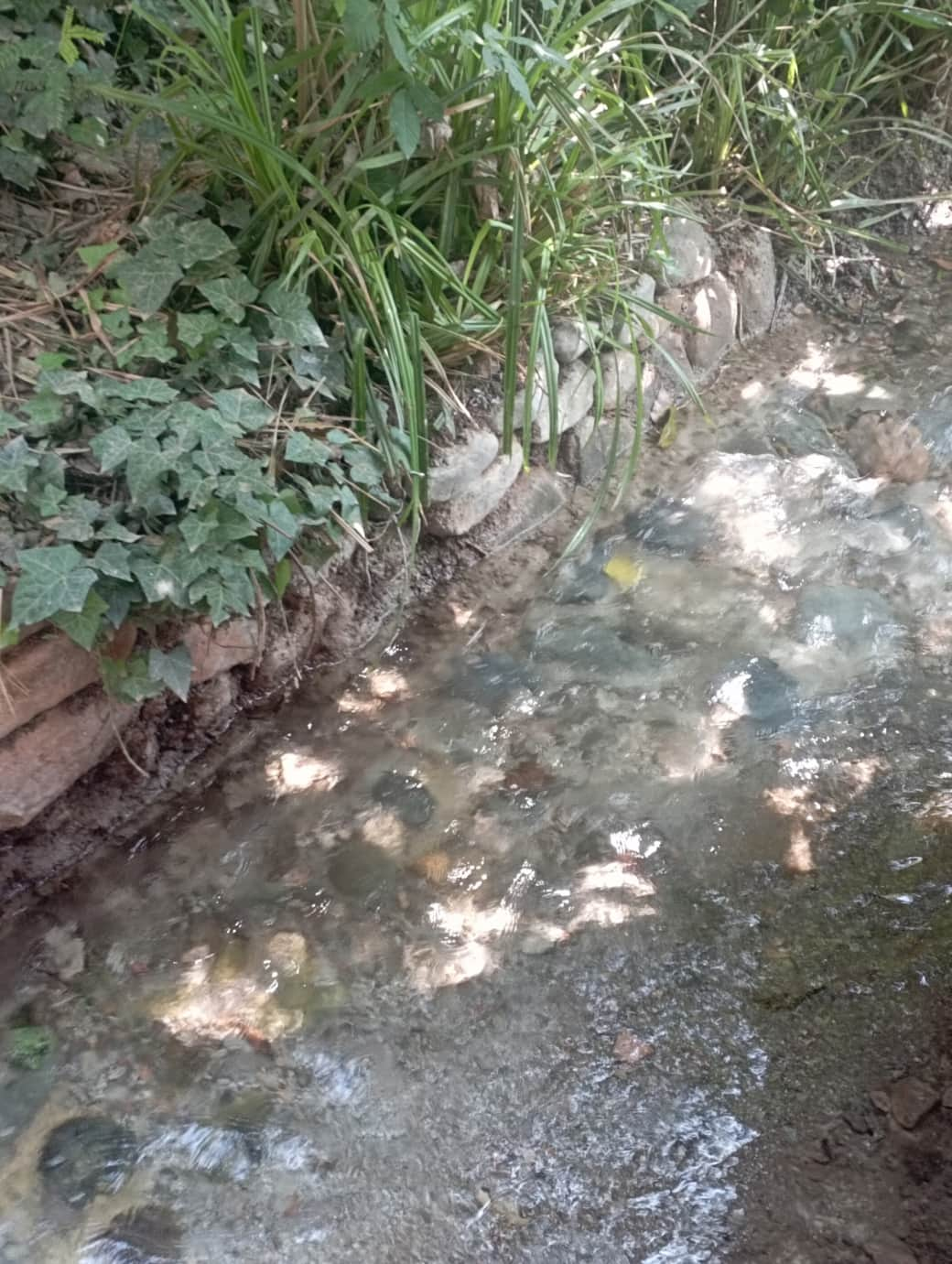
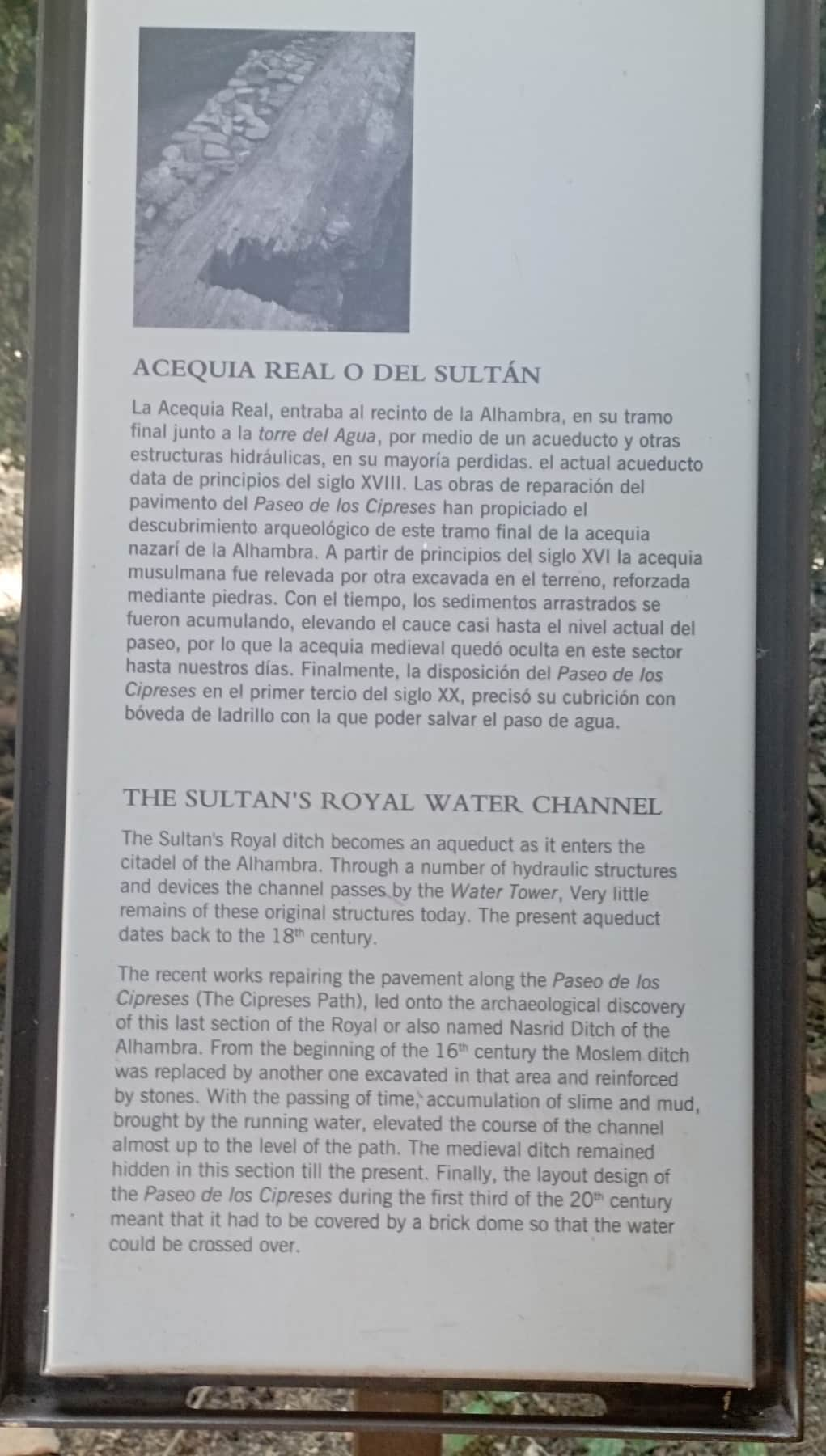
The Monumental Complex of the Alhambra and the Generalife, are places to linger and truly take in the beauty.
The gardens of Generalife are formal, with box hedges and ivy clad or fir tree arches. There are pathways of pebbles in different colours to create patterns, grand pools covered in water lilies, water fountains and the scent of the roses and a great variety of plants is heady. Wisteria, huge magnolia trees, what appeared to be a giant redwood was quite bizarre, oleander and laurel. Honestly the list of flowers and tree species is endless and definitely not just local plants.
There are plenty of benches to sit and enjoy the views whilst watching the world go by. From the gardens you get incredible views of the Nasrid Palace and its turrets and towers.
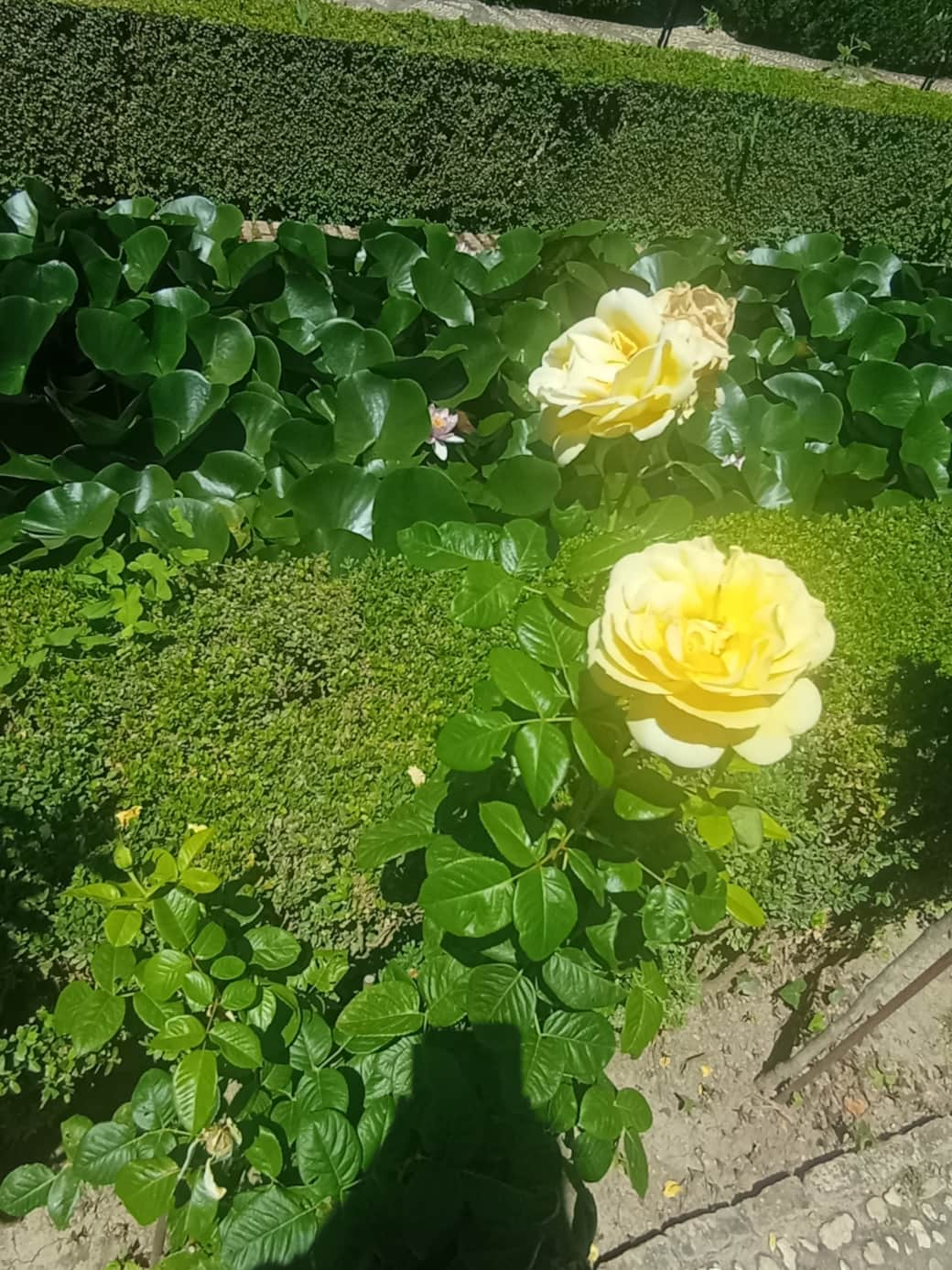
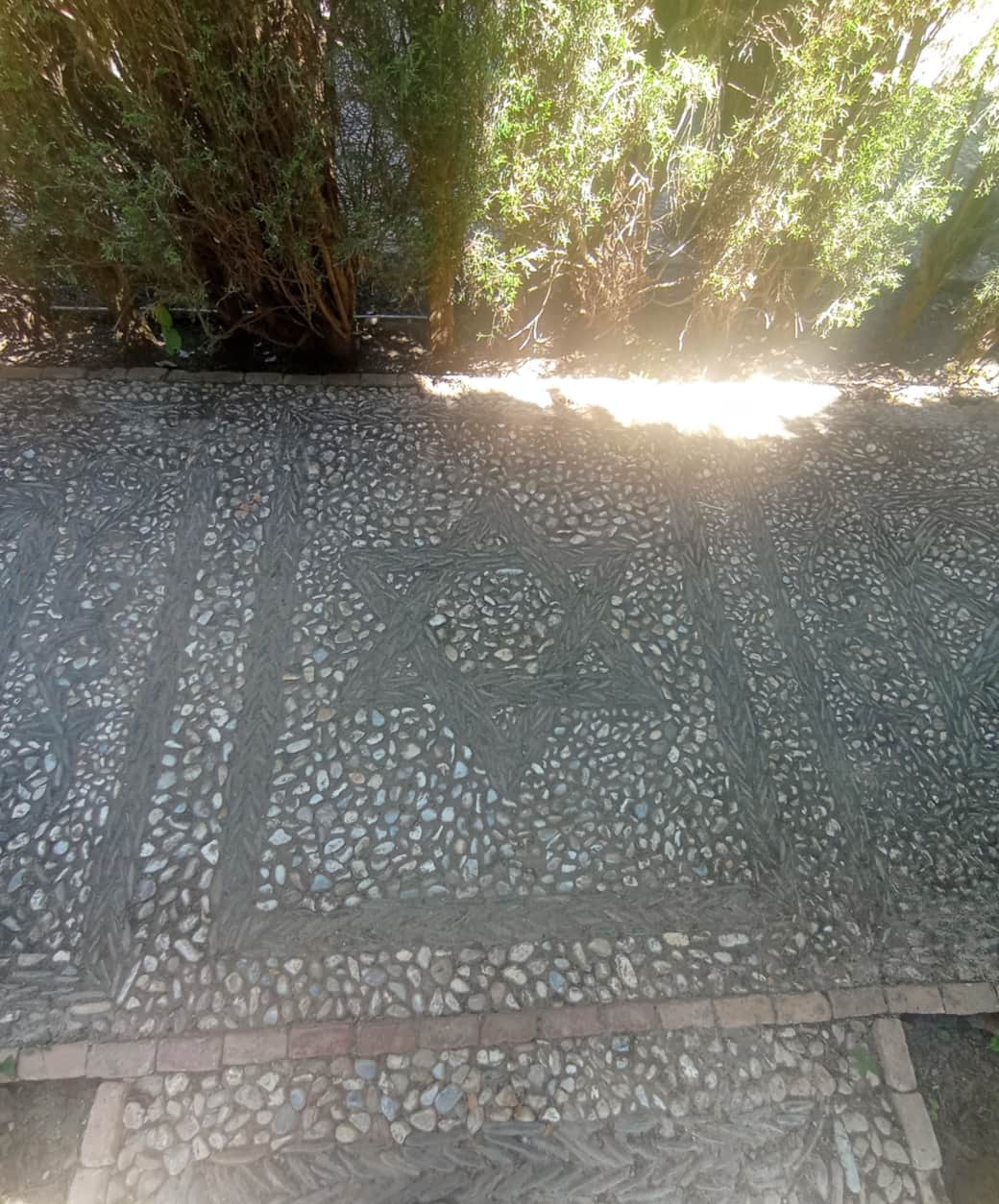
The Generalife and its gardens is truly stunning and a true mix of its remarkable history.
Where ever you turn the beauty of the architecture with its archways and amazing stone carvings surround you.
There are walkways filled with plants. Steps take you to a different aspect of the Generalife and whilst exploring it is imperative to take your time and occasionally look backwards for an alternative view.
There are steps that have a channel on either side with cool, clear running water.
The views across to the Nasrid Palace and the whole area are stunning.
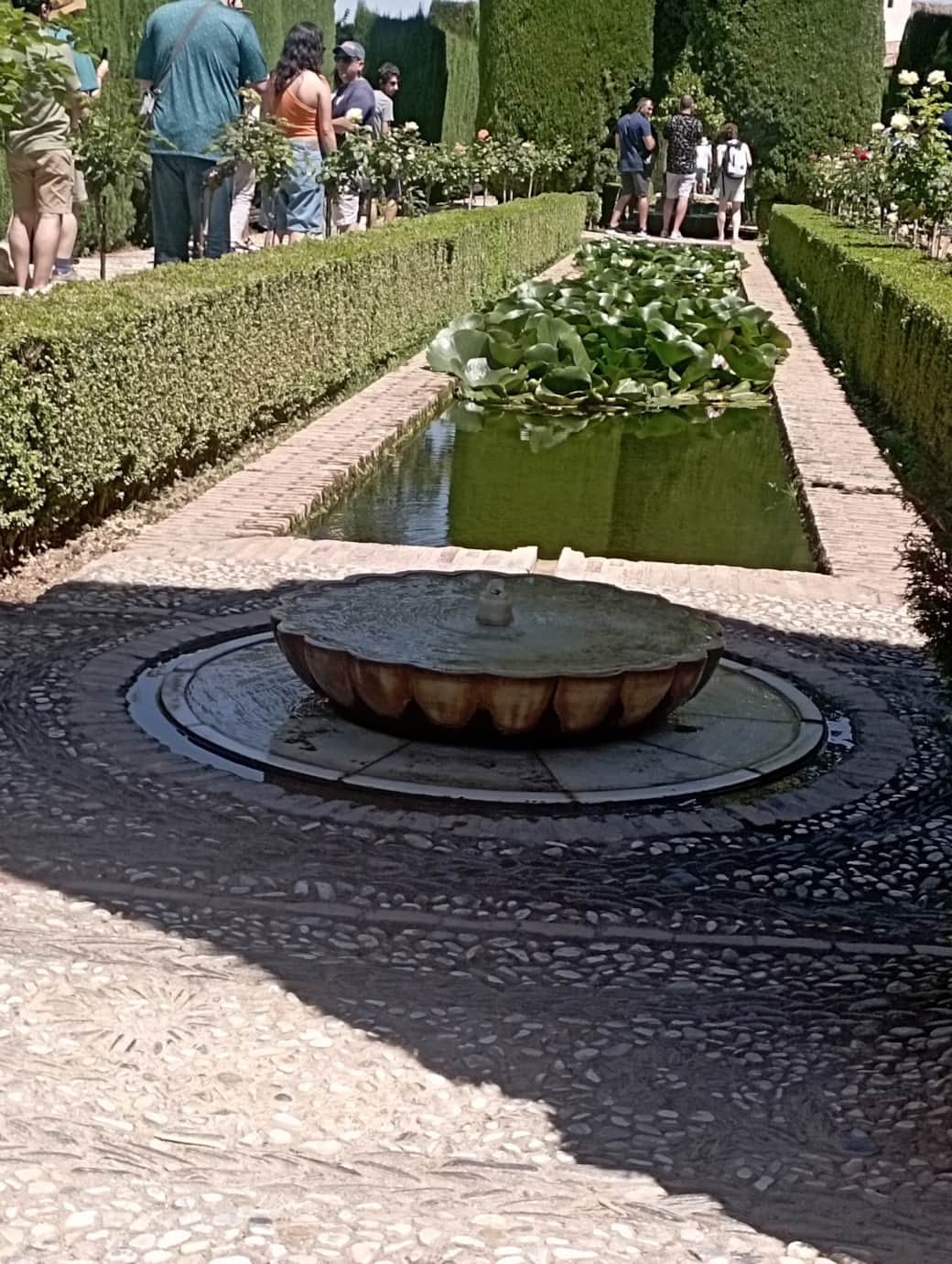
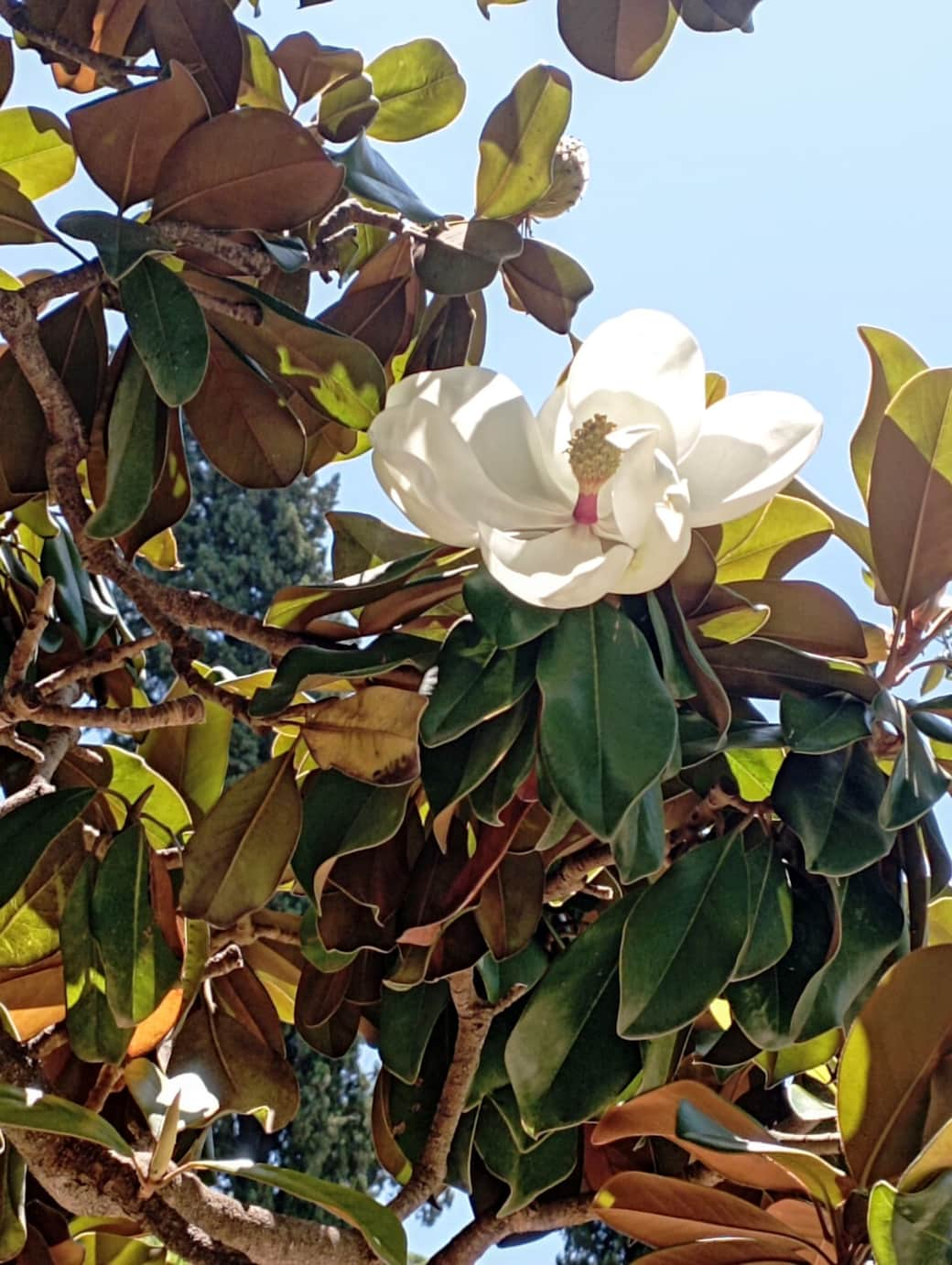
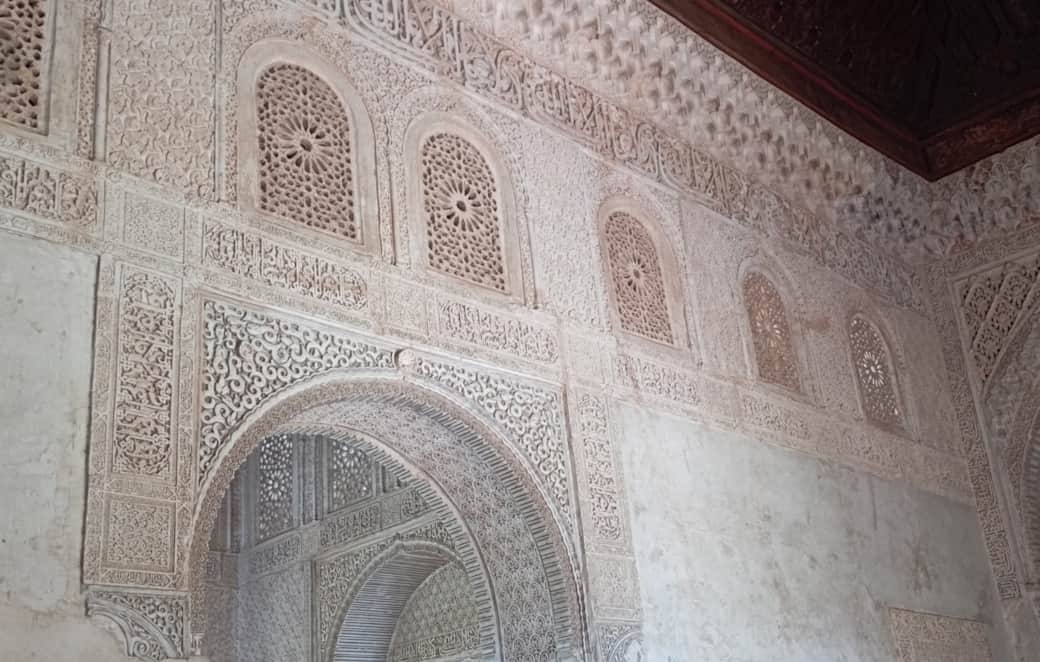
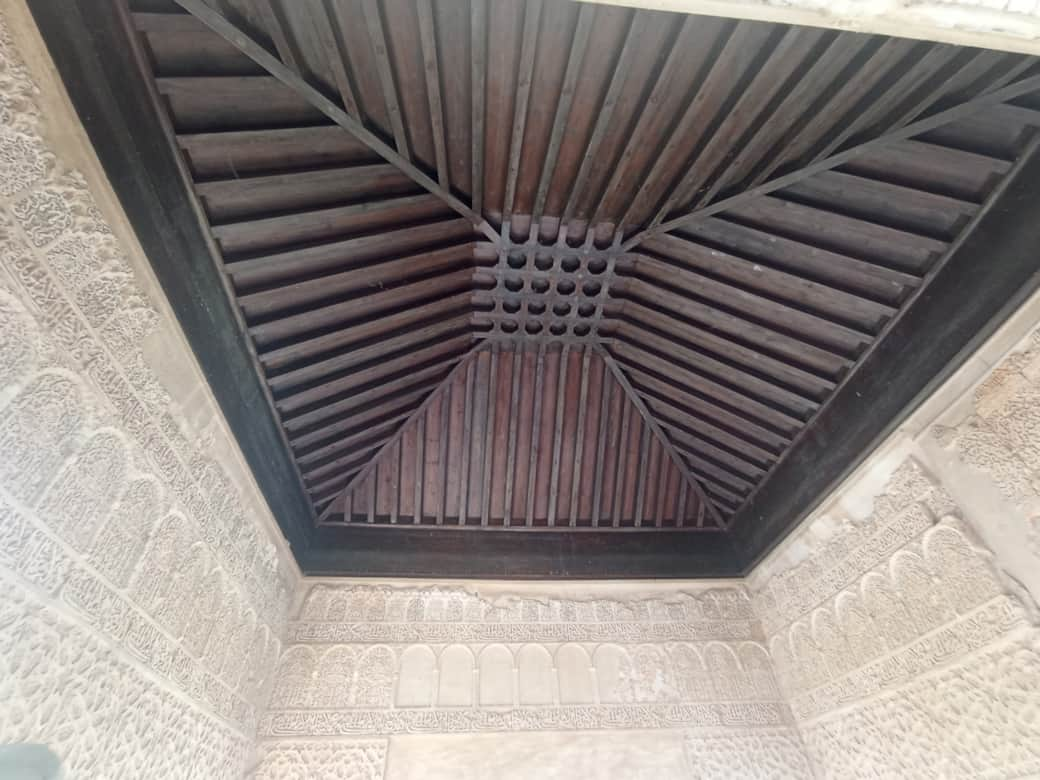
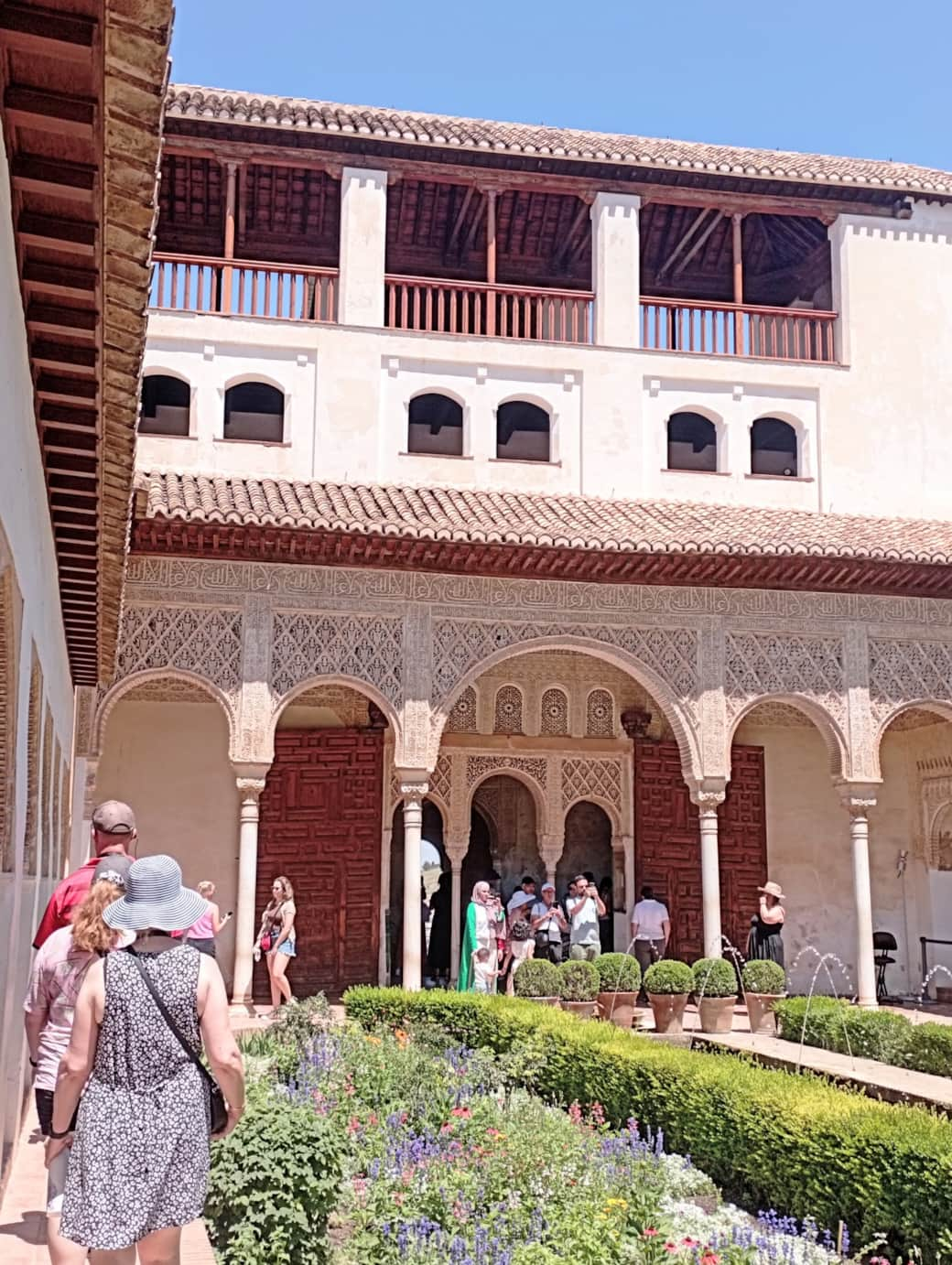
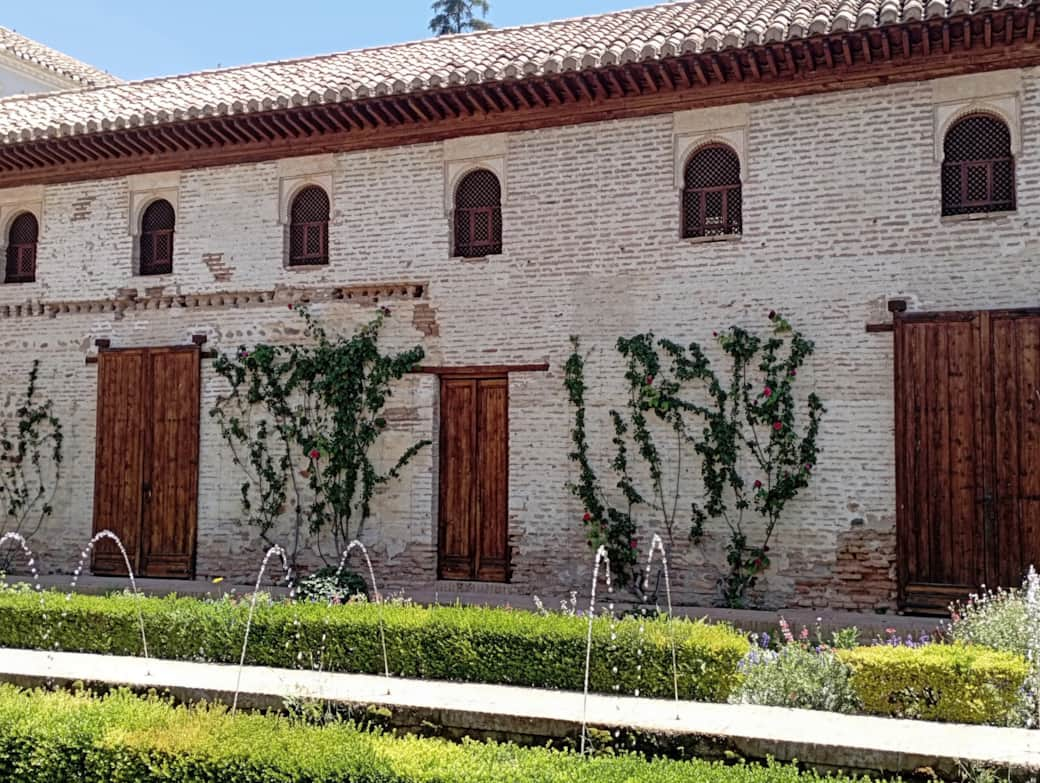

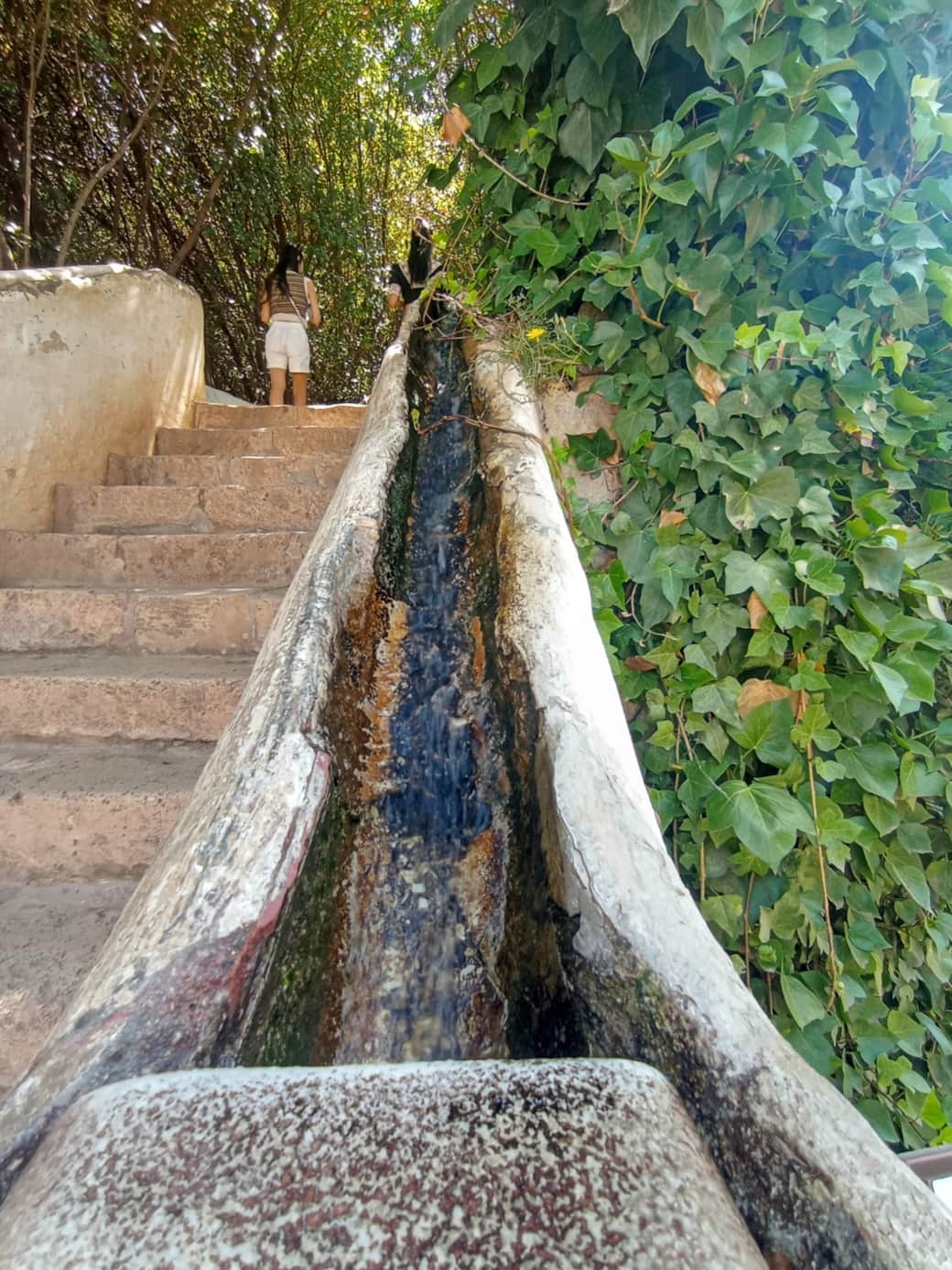
The origin of Charles V Palace (Palacio de Carlos V) was the need for a place that would include all the comforts of the time for the Emperor and his family, as the palaces, which were their summer residence, did not cover their needs.
The Emperor ordered the construction of the palace next to the Alhambra in order to enjoy its wonders. The architect in charge of the works was Pedro Machuca, an experienced architect in love with the Renaissance. The works started in 1527 and were totally finished in 1957. The construction went through several stages, the lack of financing resources, revolts that stopped the works, etc. The building was sometimes neglected to such an extent that the ceilings collapsed.
The palace is square and its main façade is 63 meters wide and 17 meters high. Its circular patio is unique and it is the most important building of Renaissance style in Spain. Only the southern and western façades are completely decorated. The northern and southern sides are not because they are connected to the palaces of the Alhambra.
The external decoration of the palace is ornate with huge carved stone panels depicting battle and cherubs above the doorway. A very strange mix of styles and themes.
The circular building has a beautiful wooden ceiling that must have taken years to complete. It was difficult to get photos as there were lighting rigs all around the central patio area.
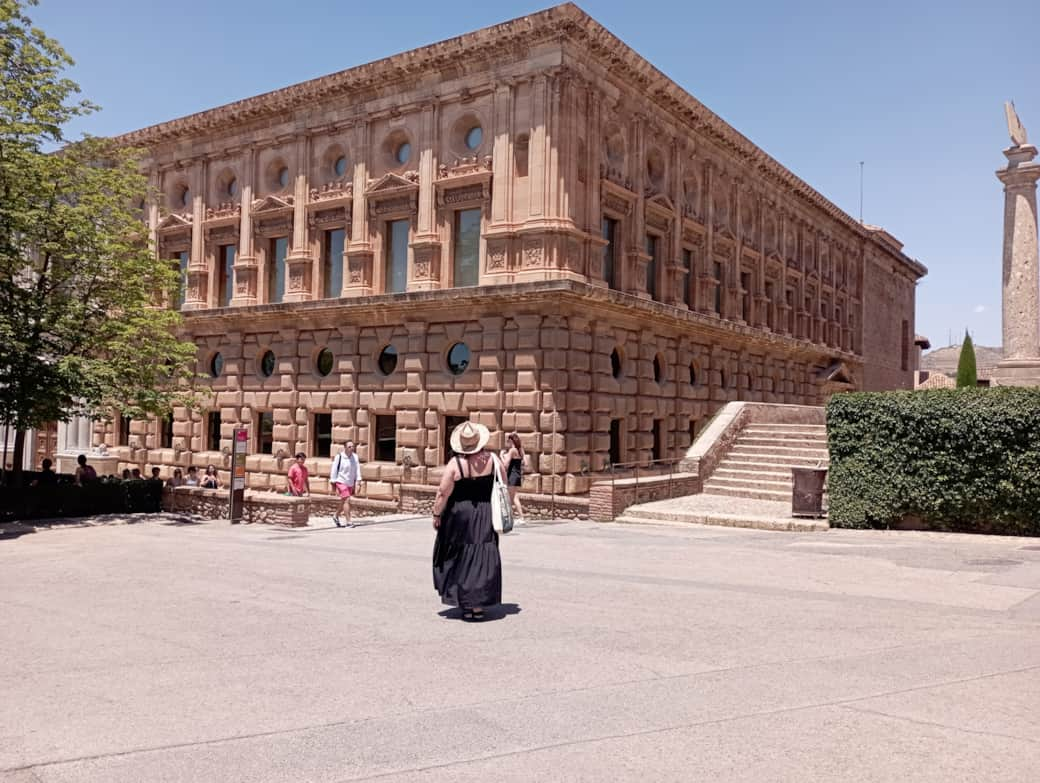
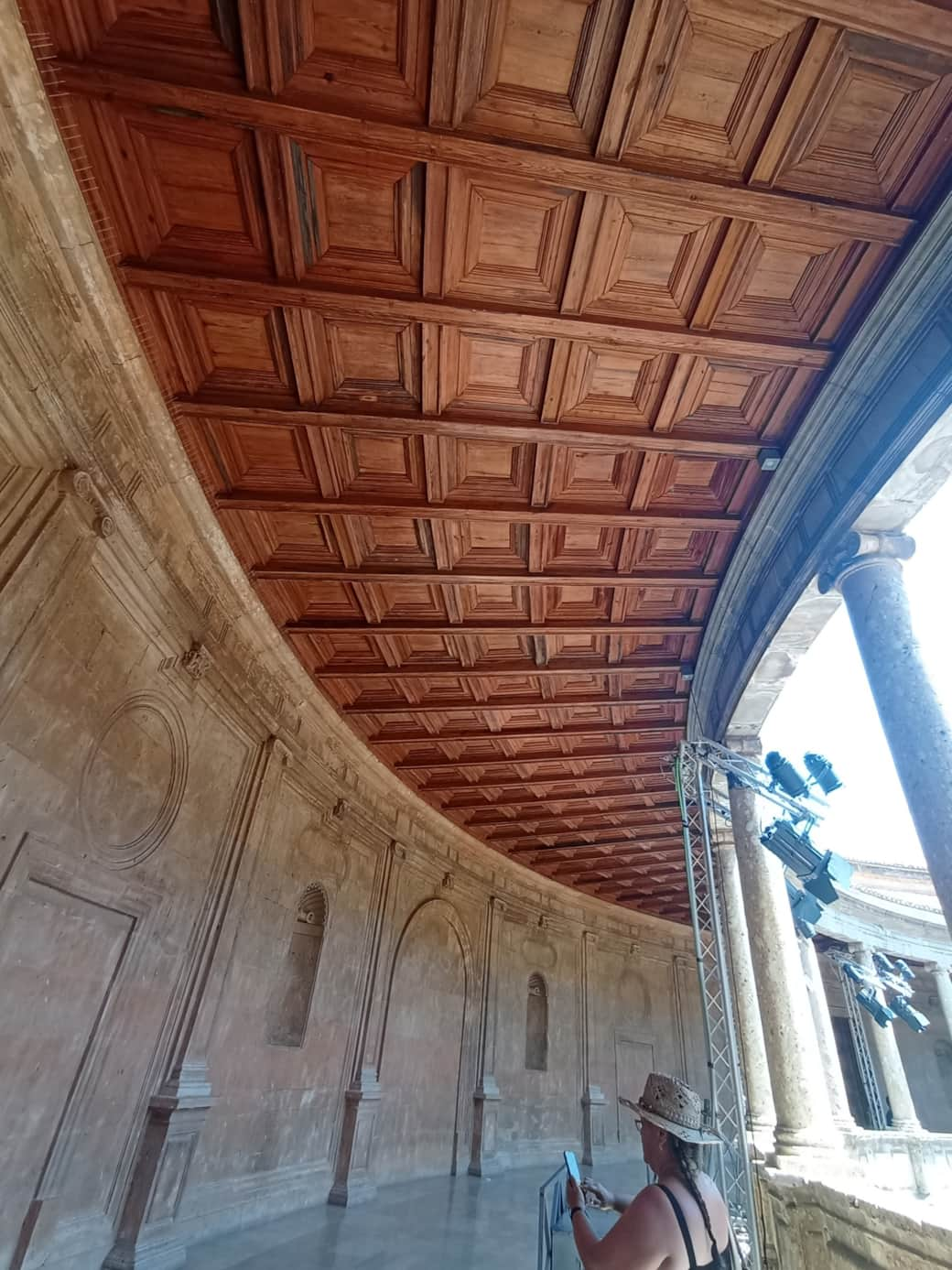
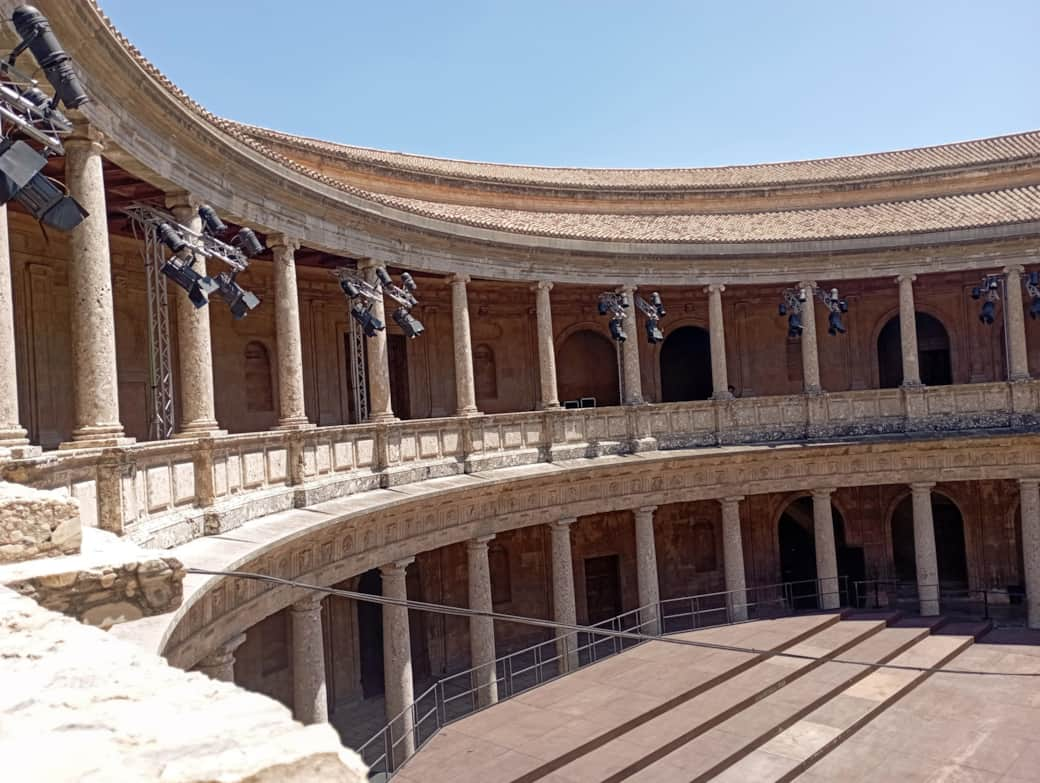
As you will probably have gathered I do enjoy a giggle.
We had a fabulous day in beautiful surroundings and had so much fun
including laughing like the proverbial drains at the silliest of things that only Yorkshire girls can.
Then we spotted 2 trees looking at us .....
